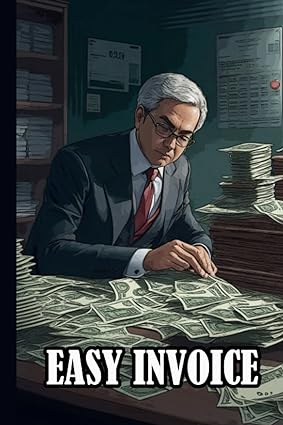Question
BACKGROUND Harriets Hats is a hat retailer who buys hats from a hat manufacturer and then sells them in its stores. The following information includes
BACKGROUND Harriets Hats is a hat retailer who buys hats from a hat manufacturer and then sells them in its stores. The following information includes the companys December 31, 20Y6 balance sheet and the details of transactions occurring during 20Y7.
REQUIRED Using the template provided on Blackboard, complete the following:
1. Record the transactions in the General Journal. Be sure to label each transaction according to its number below.
2. Post the transactions from the General Journal to the General Ledgers (t-accounts).
3. Prepare any necessary closing entries. Be sure to record them in the General Journal and post them to the General Ledgers. 4. Prepare the balance sheet, retained earnings statement, and income statement for Harriets Hats, Inc. for the year ended December 31, 20Y7.
HINT: Read through the entire assignment at least twice to become familiar with all of the important facts before beginning to do any work.
TRANSACTIONS FOR THE YEAR ENDED DECEMBER 31, 20Y7
1. Sales and Accounts Receivable
a. The sales price of each hat was $30. All sales were made on account.
b. Cash collections on account amounted to $42,000.
c. The company identified $350 of receivables as being uncollectible and wrote them off.
d. The company follows a percentage-of-receivables approach to estimate its accounts receivable that will become uncollectible. As of the end of 20Y7, the company estimates that 12% of its receivables will be uncollectible.
2. Inventory a. The company began 20Y7 with 500 hats which had a cost of $8 each. The following purchases (all on account) were made during 20Y7:
(1) January 15th 405 hats @ $10.00 each
(2) March 23rd 310 hats @ 12.00 each
(3) July 2nd 525 hats @ $14.00 each
(4) October 31st 430 hats @ $15.00 each
b. Employees physically counted 530 hats remaining in the warehouse at the end of 20Y7. The company uses a periodic LIFO inventory system to cost its inventory.
c. The company made cash payments to inventory suppliers totaling $21,500.
3. Property, Plant and Equipment
a. Straight-line depreciation is used for all store fixtures and office equipment.
b. Below is a schedule of the store fixtures and office equipment the company had in place at the end of 20Y6. FIXTURES AND EQUIPMENT (as of December 31, 20Y6)
| ID Number | Historical Cost | Useful life | Salvage Value | Date Acquired |
| 1256 | 12000 | 10 years | 1200 | Jan. 1, 20Y1 |
| 1876 | 1700 | 5 years | 300 | Jan 1, 20Y3 |
| 4299 | 22000 | 5 years | 1000 | Jan 1, 20Y6 |
c. On January 1, new store fixtures were purchased for $3,000 in cash. The company expects the fixtures to have a 5 year useful life and a $500 salvage value. d. On July 1, office equipment (ID#1876) was sold for $620.
4. Debt
a. On September 1, 20Y7, the company paid-off the note payable that was outstanding at the beginning of the period. The note had an 8% interest rate, had been issued on September 1, 20Y6, and required semiannual interest payments on February 28 and August 31.
b. Also on September 1, 20Y7, the company borrowed $4,000 on a new note payable. The new note carries a 5% interest rate with similar payment terms as the note that was just paid-off.
5. Operations
a. Two rent payments of $1,800 were made during 20Y7 (on March 1 and September 1). The payments were for rent on the store building and were prepaid for six months each. The balance in the prepaid account at the end of 20Y7 represents the rent for January and February 20Y8.
b. Cash paid out for wages during 20Y7 totaled $12,200. Records indicate that salaries for the last week of December amounted to $300 and would be paid at the end of the first week in January (a two-week pay period). c. Other expenses (paid in cash) totaled $2,150.
6. Income Taxes
a. The company paid its 20Y6 income taxes in March of 20Y7.
b. The company has a 30% income tax rate for both 20Y6 and 20Y7.
7. Common Stock
a. Dividends of $3,600 were declared and paid during 20Y7.
b. New common stock was issued for $10,000 during 20Y7.
BALANCE SHEET as of DECEMBER 31, 20Y6
Assets Cash $15,000
Accounts Receivable 5,000
Less: Allowance for Bad Debts (500)
Net Accounts Receivable 4,500
Prepaid Rent 500
Inventory 4,000
Total Current Assets 24,000
Property, Plant, and Equipment 35,700
Less: Accumulated Depreciation (11,800)
Net Property, Plant, and Equipment 23,900
Total Assets $47,900
Liabilities and Owners Equity Accounts Payable $2,500
Wages Payable 170
Interest Payable 64
Income Taxes Payable 900
Notes Payable 2,400
Total Current Liabilities 6,034
Common Stock 20,000
Retained Earnings 21,866
Total Liabilities and Owners Equity $47,900
Step by Step Solution
There are 3 Steps involved in it
Step: 1

Get Instant Access to Expert-Tailored Solutions
See step-by-step solutions with expert insights and AI powered tools for academic success
Step: 2

Step: 3

Ace Your Homework with AI
Get the answers you need in no time with our AI-driven, step-by-step assistance
Get Started


